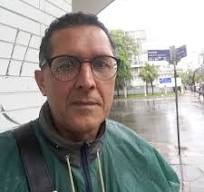In August, ahead of the Federal Supreme Court’s decision regarding the Ibirama - La Klãnõ indigenous land, Brazil witnessed the largest indigenous protest in its history. The experts believe that the Supreme Court’s decision will set an important precedent for territorial rights in the country. While agribusiness and mining companies expect that the court will establish October 5, 1988 as the cut-off date for Indigenous territorial claims, Indigenous Peoples are fighting for the full recognition and protection of their territorial rights.
In August, ahead of the Federal Supreme Court’s decision regarding the Ibirama – La Klãnõ indigenous land, Brazil witnessed the largest indigenous protest in its history. The experts believe that the Supreme Court’s decision will set an important precedent for territorial rights in the country. While agribusiness and mining companies expect that the court will establish October 5, 1988 as the cut-off date for Indigenous territorial claims, Indigenous Peoples are fighting for the full recognition and protection of their territorial rights.
Photos: Isabelle Araújo y Alass Derivas
Between August 23 and 27, the city of Brasilia witnessed the largest public protest by Indigenous Peoples in defense of their land rights. Close to 6,000 Indigenous Peoples from over 160 communities from different parts of the country descended on the city to express their opposition to establish October 5, 1988 –when the current Federal Constitution was enacted– as the final date to prove the indigenous peoples’ right to their lands. This idea is promoted by representatives of agribusiness, mining activities, garimpeiros, representatives of the timber business, landowners, tourism business, and other illegal occupants interested in exploiting areas that traditionally belong to Indigenous Peoples.

Photos: Isabelle Araújo y Alass Derivas
In the end of June, the Federal Supreme Court (in Portuguese, STF) confirmed that on August 25 or 26 it would decide on the case of the Ibirama-La Klãnõ Indigenous territory inhabited by the Xokleng, Kaingang, Guaraní, Guaraní Mbya, and Guaraní Ñandeva peoples. The case is related to the conflict that started when the government of the State of Santa Catarina challenged the territory’s demarcation by means of extraordinary appeal.

Photos: Isabelle Araújo y Alass Derivas
Since previously the Court established that its decision would have “general application”, Indigenous Peoples came to the capital of Brazil to make sure their voice is heard. In other words, the decision made by the STF will guide the Federal Government and other courts of the Judiciary when settling disputes related to the acknowledgement of indigenous peoples’ land titles. Likewise, it will act as precedent for legislation enacted to regulate land rights.

Photos: Isabelle Araújo y Alass Derivas
The legal case is thus about the conflict of two opposing arguments, where the “Indigeneity argument”, i.e. belief in the traditional rights of Indigenous Peoples to their territories, is opposed by the “time limit argument”. The latter is based on the Binding Normative Opinion expressed by the Attorney General’s Office on July 19, 2017, which was approved by the then President of the Republic, Michel Temer. It is, now, explicitly endorsed by the current president, Jair Bolsonaro, whose main political support is the rural caucus.
The case is thus about the conflict of two opposing arguments, where the “Indigeneity argument”, i.e. belief in the traditional rights of Indigenous Peoples to their territories, is opposed by the “time limit argument”.

Photos: Isabelle Araújo y Alass Derivas
If the Federal Supreme Court supports the opinion by the Attorney General’s Office, the National Indian Foundation (in Portuguese, Funai) could even carry out a general revision of all indigenous lands already demarcated, and also demarcate other areas where no indigenous occupation has been evidenced before October 5, 1988. The problem is that the Funai is currently controlled by the agribusiness. In fact, between February and November 2020, the evangelist pastor Ricardo Lopes Dias was appointed leader of the General Coordination of Isolated and Recently Contacted Indigenous Peoples despite the strong opposition from indigenous and human rights organizations.

Photos: Isabelle Araújo y Alass Derivas
The history of violence against the Xokleng who live in Ibirama – La Klãnõ and the forced displacement they were subjected to during the twentieth century is an example of the absurdity of considering the enactment of the Federal Constitution as a reference to establish land rights. Contrary to the expectations of 6,000 indigenous people who traveled to Brasilia, the STF postponed its decision once more to September 1. This day is awaited with hope by both those who had to return to their territories and those who could stay in the city.

Photos: Isabelle Araújo y Alass Derivas
The indigenous peoples’ position has already been presented and widely shared. It is the Federal Supreme Court’s turn to confirm the traditional right of indigenous peoples to their lands, as established in the Federal Constitution of 1988.

